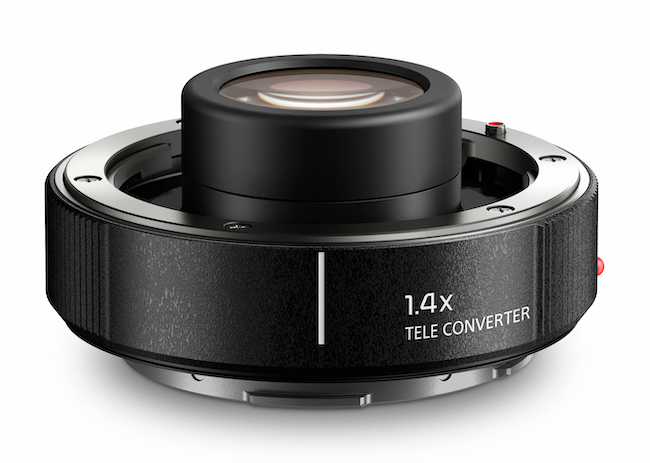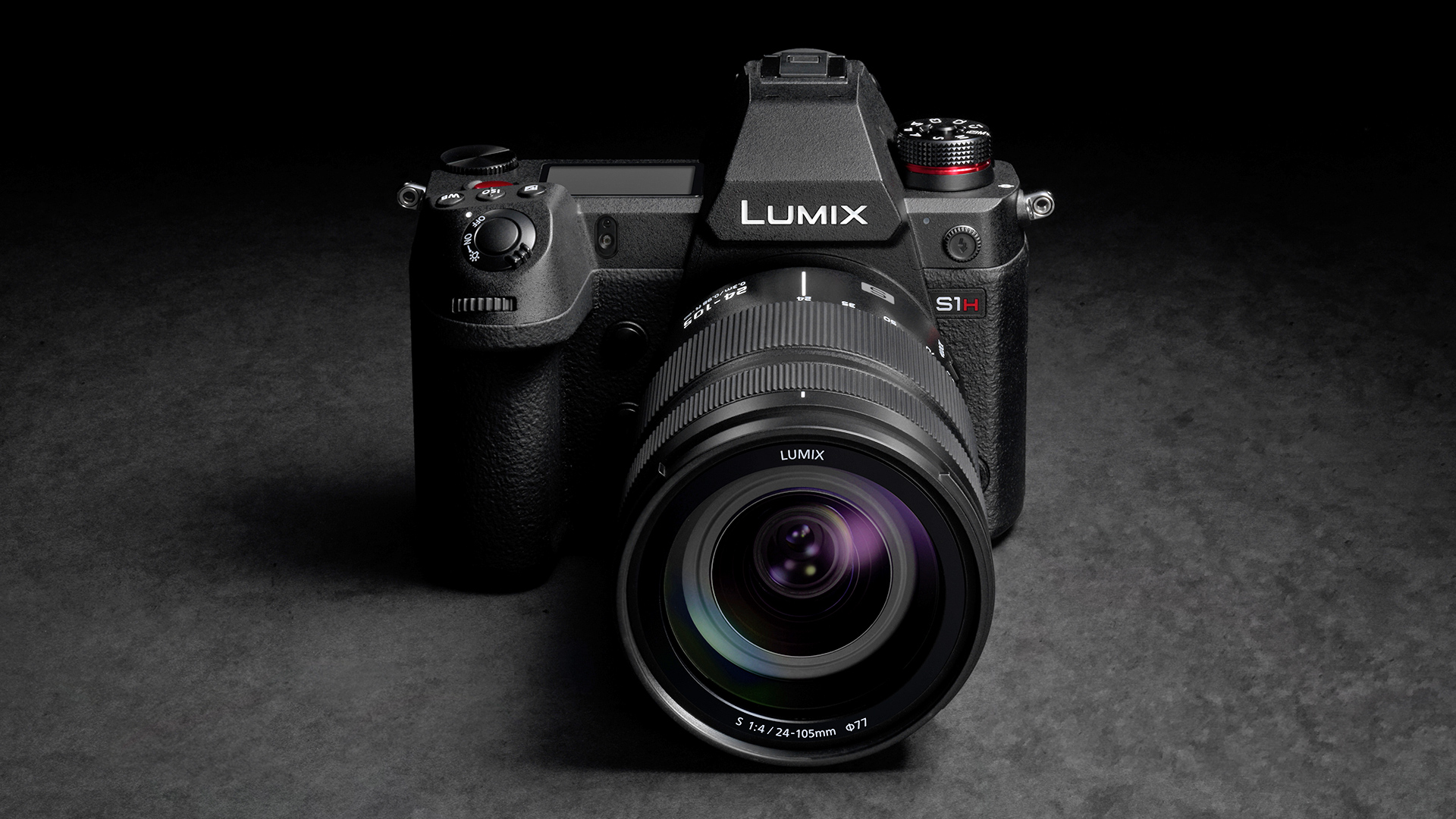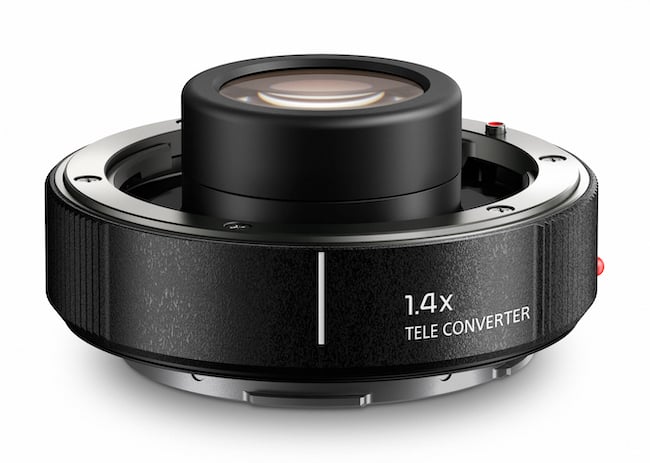

With the anticipation surrounding the forthcoming S1 firmware update the last thing anyone was expecting was a brand new camera. But that's exactly what Panasonic just gave us. Even if it turned out to be the worst kept secret on the internet!
While we await to see what the execution squad does to whoever leaked the existence and specs of the new camera, let's take a look at what it does, from official information. The leaks didn't reveal everything.
The new S1H appears to take the S1 concept, and then puts it on steroids. Let's not beat around the bush, the stand out feature here is 6K recording internally up to 24p, with 5.9K being available up to 30p. Readers will remember that Panasonic's own EVA1 will record 5.7K to an Atomos external recorder. However the internal 6K recording here is clearly a step up from that, and is therefore quite a significant development. It seems at times that 6k is the new 8K. More resolution for manipulation and cropping, but without the data overhead of 8K.
Why would Panasonic do this when it could take sales away from the EVA1? There are two parts to the answer to this. The first is that people who prefer a camcorder style form factor will usually be pretty set on that style of camera, and therefore won't really be looking at a stills style body for shooting with. The second is that the S1H is produced by LUMIX, the consumer division of Panasonic. A little friendly internal rivalry never harmed anyone!
We are sure though that the S1H will tempt a few people over from the EVA1, not least because just like other cameras in the range an optional XLR audio unit can be purchased, giving the device professional balanced audio in. Although for people who wish to shoot fast, features such as the built in ND filters of the EVA will always take precedence.

The full S1 series. Left to right: S1R, S1H, S1. The S1H is noticeably larger.
Other modes of shooting
That said, the capabilities of the S1H do not stop with just 6K recording. It can also record internally at 10-bit colour precision at up to 60p at both 4K and DCI 4K resolutions. Our notes tell us that this may not be downsampled from 6K, but is a sensor window at S35 size. However, what isn't clear is whether this applies only to the higher frame rate of 60p, or to lower frame rates as well. We'll update this article as and when we find out the answers to this.
Additionally the S1H prominently features a 4:3 anamorphic shooting mode, something which, while being a bit of a niche, is gaining popularity all the time.
V-Log and V-Gamut both feature on the camera, resulting in a claimed 14-stops of dynamic range. Panasonic claims due to consistent colour management during the design stage, footage shot in this way can be intercut with that taken with the VariCam.
Unlimited recording
A lot of stills cameras that do duties as a video camera usually fall short on recording time, often with an artificially imposed maximum of around 30 minutes due to thermal management. Panasonic claims that the S1H can record in every single video mode for an unlimited amount of time, the size of your storage card permitting of course.
So how does the LUMIX S1H fit within the S1 line of cameras? After all, most people have been waiting for the new S1 firmware update, which was, to be frank, what most of us here at RedShark were expecting to be the main announcement we are now seeing.
Panasonic sees the higher resolution S1R as being the most stills focussed of the three, while it views the S1 as a good balance between capable stills and video abilities. The S1H on the other hand has been developed especially for film/video production. It is quite telling that the press release for the camera makes absolutely no mention of stills capabilities at all. The S1H is slightly bigger than its siblings, no doubt to help with any thermal issues.
Regarding bitrates for the different video modes, we do not know specifics yet, although of course we will update you with this information as and when it is forthcoming. We would put money on a wager that high bitrate intraframe recording will feature however.
We've been told that the S1H will have an RRP of €4k, and will be available to buy in the fall.
One more thing
The S1H was the surprise announcement this week, but there's still the matter of the long awaited new firmware for the S1. And luckily for owners awaiting this we now have the full details. It isn't quite ready for public release yet, but this new announcement does now tell us what to expect from it. So here goes.
The new firmware, snappily called "Software upgrade key DMW-SFU2" will feature:-
14+ stops of v-log recording
4:2:2 10-bit 4K internal video recording at 25/30p
10-bit 4K output over HDMI at 50/60p with 4:2:2 colour resolution
VariCam matched V-Log and V-Gamut
The ability to use custom LUTs while recording and during playback
A new waveform monitor function
48kHz/24-bit or 96kHz/24-bit sound recording in MOV modes using the optional DMW-XLR1 XLR microphone adaptor
The firmware upgrade will be available from July 8th free of charge for existing owners of the S1, while new purchasers will be able to access it until 30th September. From the 1st October the upgrade will be available for owners to purchase for £179.
Both announcements show that manufacturers can still surprise us, and that we appear to be entering an entirely new generation of mirrorless cameras that, on paper at least, would appear to be getting within a hairs breadth of far more expensive systems. This has been said for a while now, but each and every new major release would appear to edge ever closer. Where once you would need an Alexa or VariCam for 15-stops of dynamic range, we are now seeing relatively low cost cameras claiming to be almost at that point now, too.

The MDW-STC14 1.4x extender
New glass
Along with the cameras, Panasonic also announced a new 70-200mm f/2.8 lens, which will be available later in the year. Interestingly the company appears to have recognised that full-frame cameras have one shortcoming when compared to smaller chipped devices. Whilst wide angle glass is much easier to obtain, telephoto lenses are a lot bigger and more expensive. As a result Panasonic has produced two new teleconverters to make longer focal lengths a bit more accessible.
These will come in 1.4x (DMW-STC14) and 2x (DMW-STC20) versions. These will be fully compatible with the autofocus of existing lenses such as the LUMIX S PRO 70-200 f/4, and are fully dust and splash resistant.
The 1.4x extender comprises seven lenses, including two ultra high refractive index lenses in four groups. The 2x version meanwhile, comprises eight lenses including the two ultra high refractive index lenses in four groups.
Teleconverters get a mixed response from some quarters, but with cameras now having the ability to correct issues such as chromatic aberrations on the fly, these should, with any luck, be of a high quality, and therefore useful to have in a kit bag.
The 1.4x extender will have an RRP of €569.99, whilst the 2x variation will be priced at €669.99. Even if they don't quite reach the quality of a dedicated telephoto zoom lens, these could still be a very useful solution for shooters who are working fast. And they are much less expensive than a brand new 400mm zoom!
Tags: Production


Comments